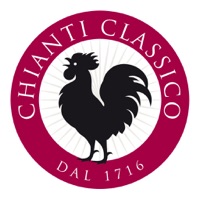
에 의해 게시 에 의해 게시 Makeitapp s.r.l.
1. in the early 20th century, when the fame of chianti wine was increasing year by year and its production territory was no longer able to meet a growing national and foreign demand, wine began to be made outside the chianti zone delimited in 1716, which was also called “chianti” or “chianti-style” wine.
2. since then, chianti wine produced outside the geo- graphical area has been called “chianti” while chianti classico is the wine made within the original production zone, the one known since 1716 as “chianti”.
3. In 1716 Cosimo III, Grand duke of tuscany, officially delimited the chianti production zone: an area lying between the cities of Florence and siena where the homonymous wine was produced and was already enjoying great success.
4. For consumers, but even for wine insiders, the bor- derline between these two contexts is so unclear that the adjective “classico” is often omitted in describing a chianti classico in tastings, comments and articles.
5. and so in 1924 to defend their own wines, makers of the original chianti founded the consorzio per la tute- la del vino tipico del chianti e della sua marca di origine (consortium for the protection of typical chianti Wine and its mark of origin).
6. the name of a wine made in tuscany but not in the geographical zone called “chianti”.
7. the name of the wine made in the geographical zone called “chianti”.
8. the trademark immediately chosen was the Black rooster, historic symbol of the chianti military League and depicted by famous painter Giorgio Vasari on the ceiling of the salone dei cinquecento at palazzo Vecchio in Florence.
9. In 1932 a specific ministerial decree was issued to distinguish the chianti made in its zone of origin by adding the adjective “classico”.
10. in fact, that adjective is very important, because it di- stinguishes chianti classico from chianti wine.
11. at that time the wine called “chianti” was made in the territory called “chianti”.
또는 아래 가이드를 따라 PC에서 사용하십시오. :
PC 버전 선택:
소프트웨어 설치 요구 사항:
직접 다운로드 가능합니다. 아래 다운로드 :
설치 한 에뮬레이터 애플리케이션을 열고 검색 창을 찾으십시오. 일단 찾았 으면 Chianti Classico - The Official App 검색 막대에서 검색을 누릅니다. 클릭 Chianti Classico - The Official App응용 프로그램 아이콘. 의 창 Chianti Classico - The Official App Play 스토어 또는 앱 스토어의 스토어가 열리면 에뮬레이터 애플리케이션에 스토어가 표시됩니다. Install 버튼을 누르면 iPhone 또는 Android 기기 에서처럼 애플리케이션이 다운로드되기 시작합니다. 이제 우리는 모두 끝났습니다.
"모든 앱 "아이콘이 표시됩니다.
클릭하면 설치된 모든 응용 프로그램이 포함 된 페이지로 이동합니다.
당신은 아이콘을 클릭하십시오. 그것을 클릭하고 응용 프로그램 사용을 시작하십시오.
다운로드 Chianti Classico Mac OS의 경우 (Apple)
| 다운로드 | 개발자 | 리뷰 | 평점 |
|---|---|---|---|
| Free Mac OS의 경우 | Makeitapp s.r.l. | 0 | 1 |
There has always been an idiomatic-geographic confusion between two different docGs: chianti classico and chianti. While in the enological field there are two separate terms, “chianti classico” and “chianti,” from the historical-geographical standpoint there is only the term “chianti.” For consumers, but even for wine insiders, the bor- derline between these two contexts is so unclear that the adjective “classico” is often omitted in describing a chianti classico in tastings, comments and articles. in fact, that adjective is very important, because it di- stinguishes chianti classico from chianti wine. they are two distinct and separate docGs, with two diffe- rent sets of production regulations, production zones and consortiums for the protection of the product. a Bit of history In 1716 Cosimo III, Grand duke of tuscany, officially delimited the chianti production zone: an area lying between the cities of Florence and siena where the homonymous wine was produced and was already enjoying great success. at that time the wine called “chianti” was made in the territory called “chianti”. in the early 20th century, when the fame of chianti wine was increasing year by year and its production territory was no longer able to meet a growing national and foreign demand, wine began to be made outside the chianti zone delimited in 1716, which was also called “chianti” or “chianti-style” wine. and so in 1924 to defend their own wines, makers of the original chianti founded the consorzio per la tute- la del vino tipico del chianti e della sua marca di origine (consortium for the protection of typical chianti Wine and its mark of origin). the trademark immediately chosen was the Black rooster, historic symbol of the chianti military League and depicted by famous painter Giorgio Vasari on the ceiling of the salone dei cinquecento at palazzo Vecchio in Florence. In 1932 a specific ministerial decree was issued to distinguish the chianti made in its zone of origin by adding the adjective “classico”. since then, chianti wine produced outside the geo- graphical area has been called “chianti” while chianti classico is the wine made within the original production zone, the one known since 1716 as “chianti”. Recapping Chianti the name of a territory delimited in 1716 that today covers 9 communes under the provinces of Florence and siena. Chianti the name of a wine made in tuscany but not in the geographical zone called “chianti”. Chianti Classico the name of the wine made in the geographical zone called “chianti”. Only this wine is entitled to be identified with the historic Black Rooster symbol.
카카오 T
야놀자
여기어때 - 호텔, 모텔, 펜션, 캠핑 최저가 예약!
코레일톡
Airbnb
우티(UT): Uber + TMAP (택시)
SRT - 수서고속철도(NEW)
[공식]고속버스 티머니
[공식]시외버스 티머니
쏘카 - 1등 카셰어링
아고다(Agoda) - 여행 할인 예약
지쿠터
그린카 – 이동을 새로 그리다
데일리호텔
트리플 - 최저가 예약부터 여행계획까지